“How should one enter the sea? In our country, men use breechcloths and pants for sea bathing. If we are to choose one of these, our choice must be pants. Since the fabric used for breechcloths is tight, the area they cover cannot completely contact the water and it takes a long time for the latter to reach the body. From a scientific point of view, things used for sea bathing should probably have permeable fabrics…”
Salahaddin Ali of Beşiktaş, Naval Doctor
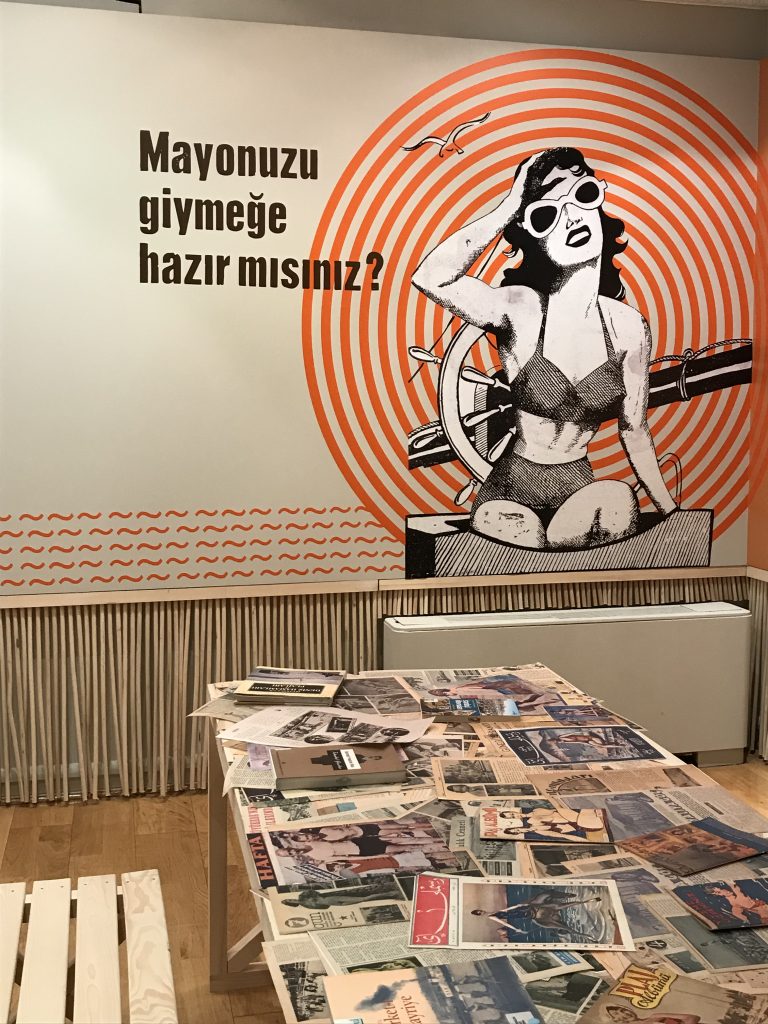
It’s a fading habit but watching old Turkish movies when you don’t have much to do in a summer day like this was a common time killing activity for Turkish kids in 80s and 90s. We didn’t have dozens of local TV series (which I honestly do not think is such a bad thing after all) so, whenever TV channels ran out of new material, they would broadcast old Turkish movies. Ever heard of Ayşecik, Ediz Hun, Türkan Şoray? If not, you still have gaps to fill to complete Turkish Culture 101!
These movie stars used to party at the beaches, go swimming, hang out by the water at night and it never really occurred to me to question where these places are. I am not from Istanbul anyway (but I would get excited every time I see the floor tiles of good old Kordon of Izmir in the movies!); the city was completely different when I moved in in 2004 from what it was in those nostalgic movies, so I didn’t question how come they could go swimming in Istanbul… Until I stepped into Pera Museum’s Sea Leisure exhibition. I was born and raised by the Aegean cost, a complete child of the sea, immediately fell in love with the exhibition. Even the name in Turkish is so spot on with nostalgia that you are drawn into the old beautiful, salty smelling world of Istanbul.
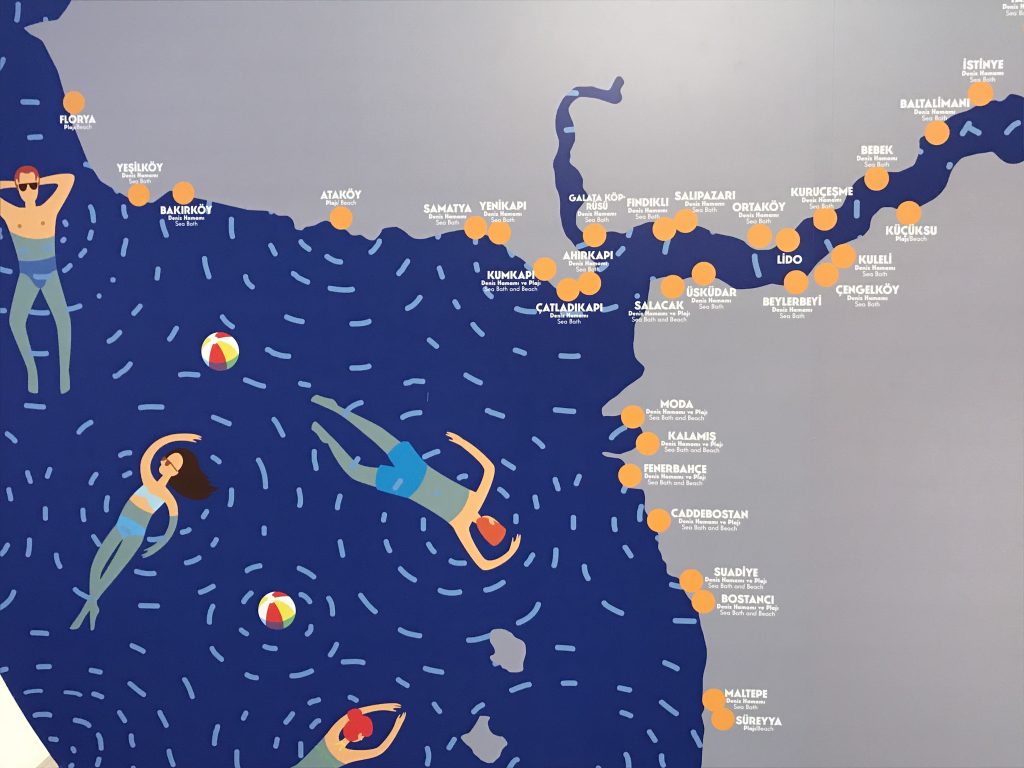
“The right and pleasure of Istanbulites to live at the “leb-i derya,” that is, “upon the lips of the sea”, has been destroyed by barbaric urban developers.
Aydın Boysan
When a Muslim person dies in Turkey, the Imam asks “How did you know the deceased?” meaning, if she/he was a good person or not and continues the ceremony after he receives a confirmation about the well-manners of the deceased. Although Sea Leisure is a colorful, happy exhibition, I couldn’t help but think that we were secretly asked the question “How did we know the deceased?” I never knew that old, more lively and optimist Istanbul, an Istanbul (a Turkey, in other words) that was hoped to be created by the founders of the Republic but didn’t really fit the society.
In cooperation with the Istanbul Research Institute, (an institution you should definitely follow to discover interesting bits and pieces of Istanbul history) Pera Museum provides us the story of the relationship of Istanbulites and the sea. Istanbul’s Seaside Leisure: Nostalgia from Sea Baths to Beaches focuses on the cultural and sociological transformation that took place in the 19th and early 20th centuries in Istanbul through the city’s unique sea culture.
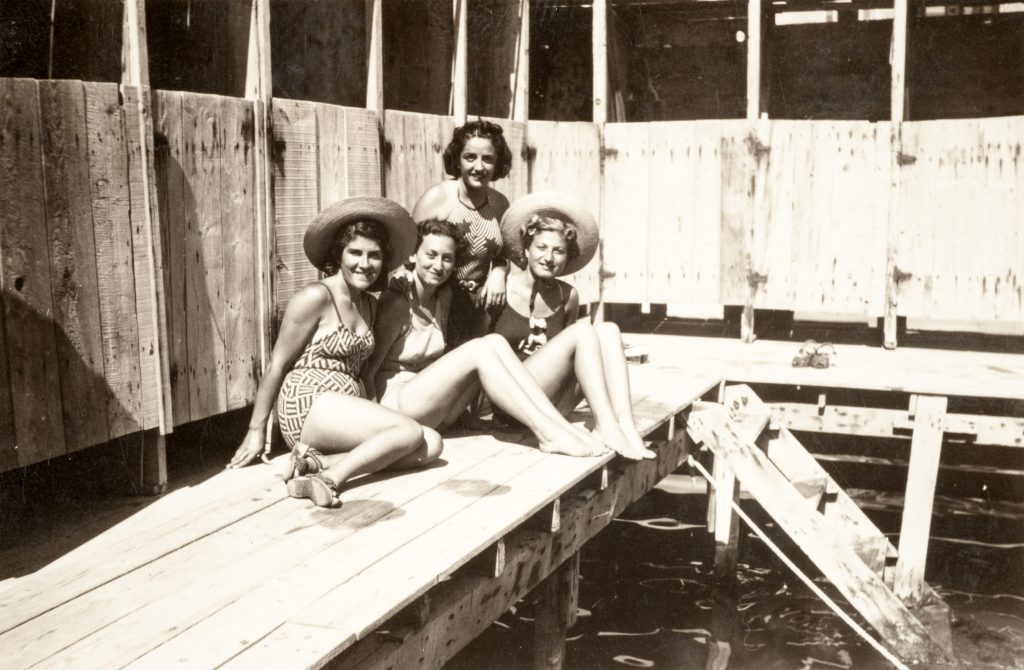
Curated by historian, writer and academic Zafer Toprak, the story starts around the First World War period, until when swimming in the sea was regarded as a private act and frowned upon. People of Istanbul used to swim inside what they called “sea baths” that were enclosed with wooden panels. You see a number of photos, paintings of these private swimming spots in the exhibition. “The change from sea baths to beaches was nothing less than a revolution,” says Pera Museum. With the arrival of the White Russian immigrants escaping the communism in Russia from 1920s onward, you witness that sea baths left their place to the beaches where men and women could swim together as a sociological change took over the city.
The museum spares an important part in the exhibition for the first years of the Turkish Republic with photos of Mustafa Kemal Atatürk and İsmet Inönü (Atatürk’s close friend, first Prime Minister and second President of the Republic after Atatürk’s death) which would capture the dear hearts of Turkish secularists and make them yearn for the good old days. The founders of the Republic gave great importance to social engineering, deliberately spent time at the beach among the public, especially with women, with the aim of making women more visible in social life. Photos and videos of Atatürk rowing with his daughter at Florya Beach, İsmet Pasha plunging into the sea in front of public at the Prince’s Islands are nice touches in the exhibition that shows what the vision of Turkish Republic used to be.
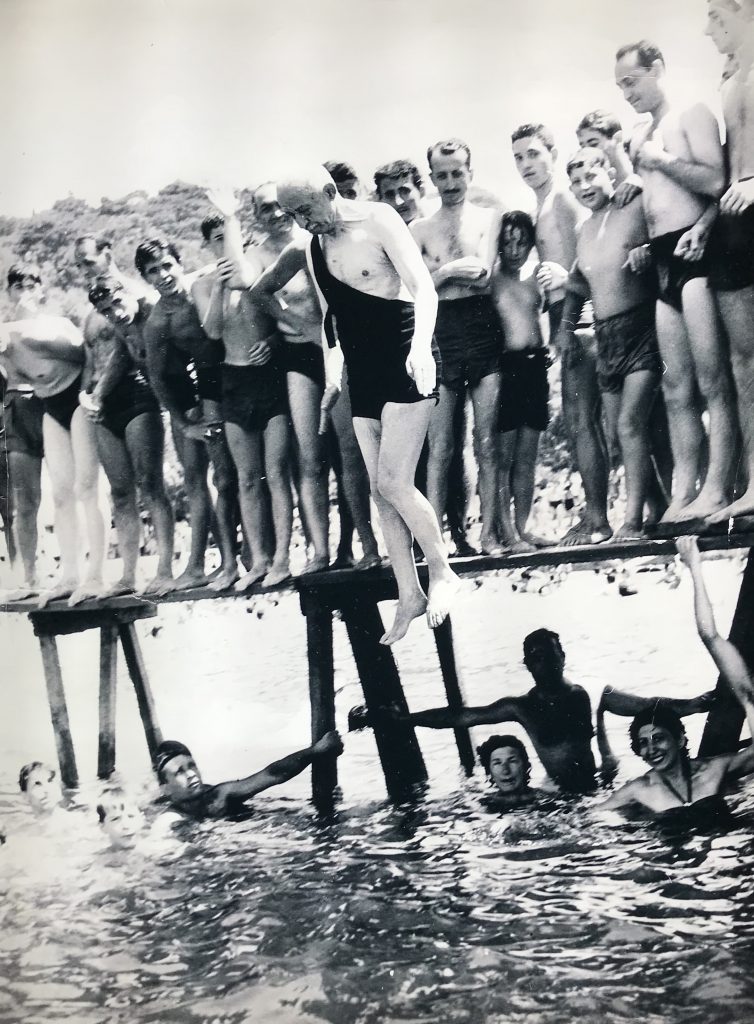
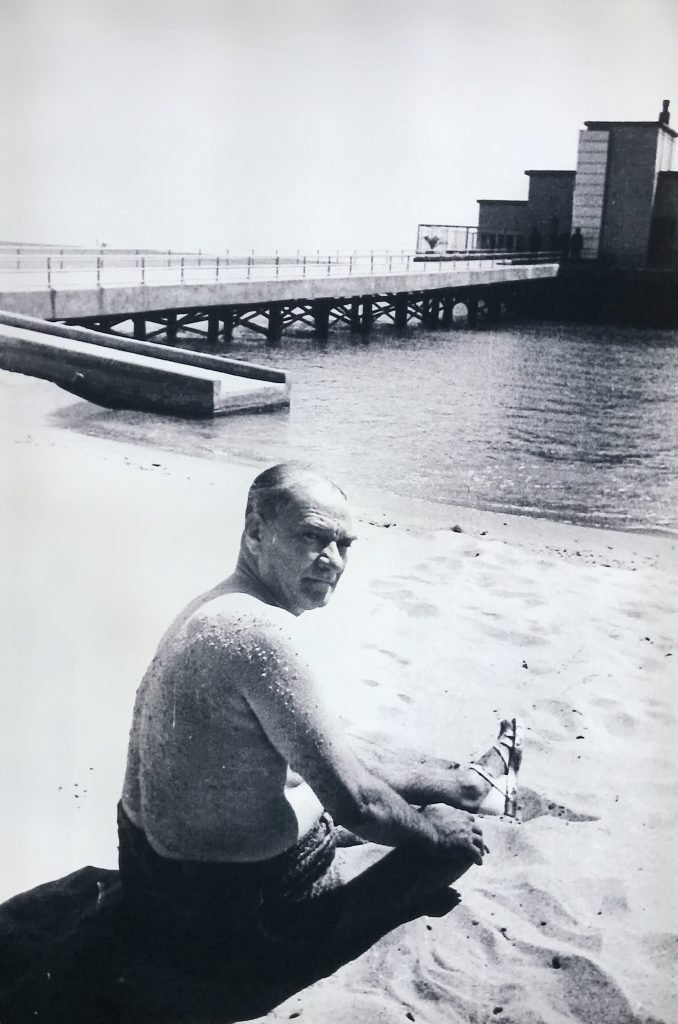
“Living by the water… It’s a way of life, and it grows on you. The people of Istanbul are addicted to the water. They get no joy out of living in a place that does not have a view of the water.”
Aydın Boysan
The inhabitants of the city soon got used to beach-going, and the activity created its own forms of entertainment, fashion and culture. Once the sea became a part of urban life, Istanbul developed a unique sense of freedom as well, continues the museum’s storyline. Imagine Suadiye-Caddebostan line with a series of small bays; covered with pines willows, plane trees reaching down the sea, shows, jazz concerts and dances taking place every day at the hotels, casinos and restaurants around. Süreyya Beach at Maltepe, as on the largest and most modern beached in the Anatolian side, with women posing at the popular Temple of Virgins at the beach (which is sadly inside a mall’s car-park today…) Rowing and sailing became popular during this period, specifically around Moda and Fenerbahçe, which thankfully carries its legacy today.
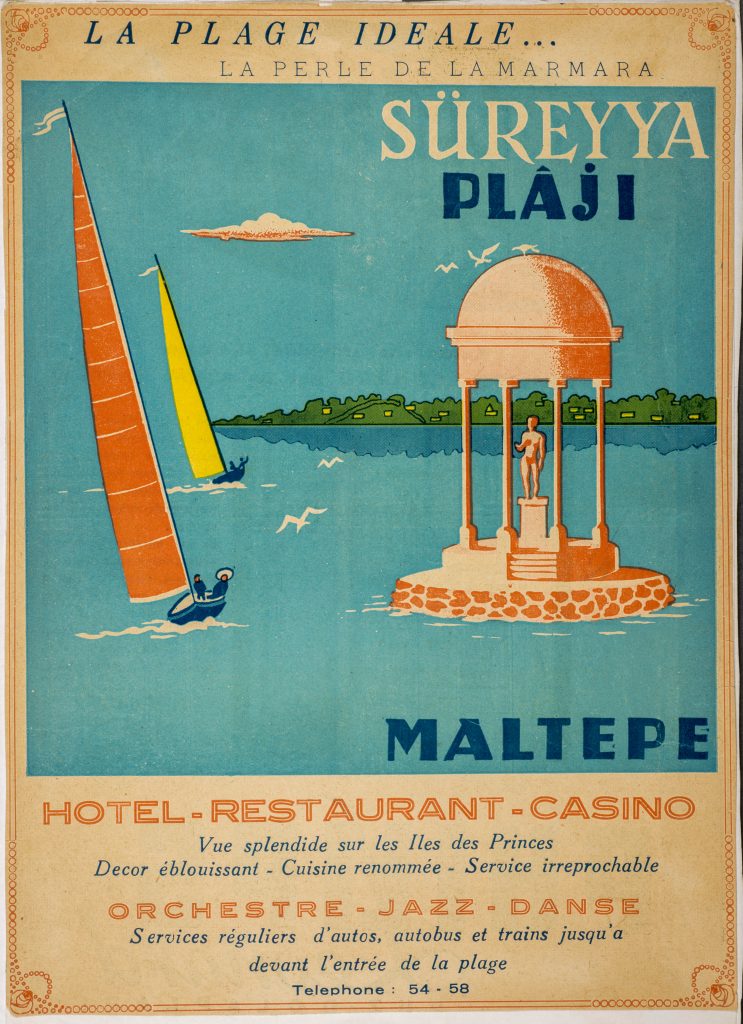
“… The place children use for sea bathing must be located in an area untouched by the wind. Likewise, the beaches chosen for sea bathing must be constantly caressed by the sun. Because the sun is life, just like the sea.”
Doctor Ahmed Şükrü of Adana, Who Can Bathe in the Sea
Beaches’ of Istanbul’s golden age continued until the 1960s. The demographic turnover that took place between 1940s and 1980s brought population growth, immigration from the countryside, a whole new lifestyle and polluted the seas. In a way, the city lost its sea. Istanbul’s sea leisure ended as Bodrum, Marmaris, Antalya began to emerge as new holiday spots of the city people. (For Turkish speakers; see SALT Yazlık for another Turkish summer nostalgia.)
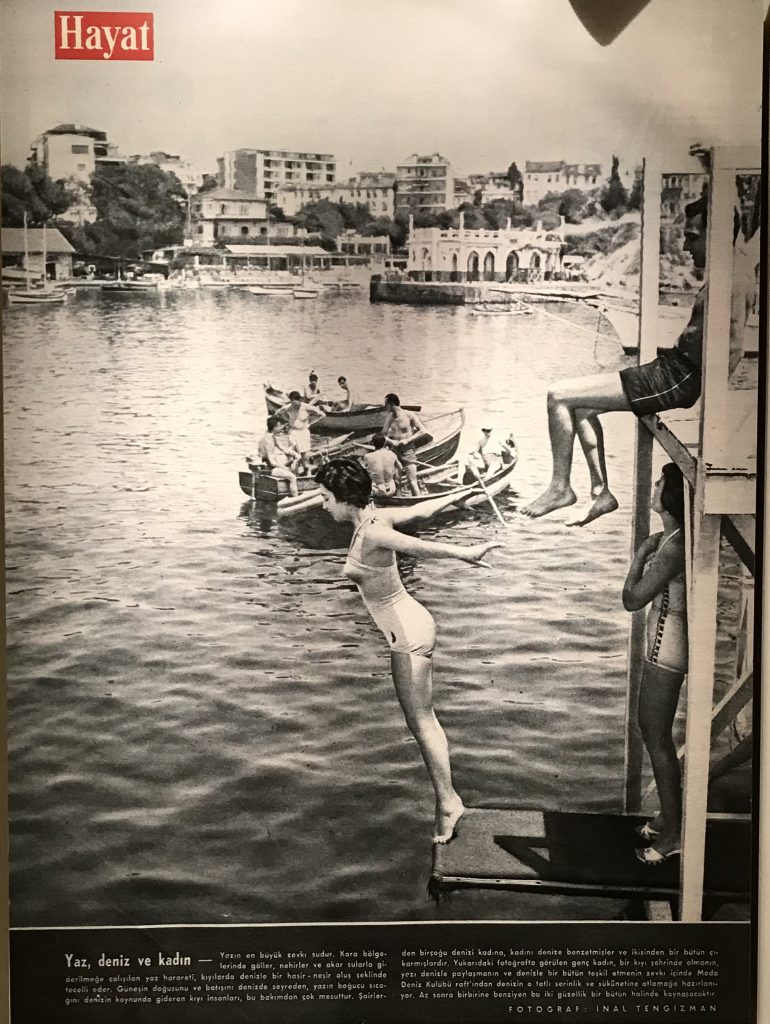
I always consider Istanbul as a city so consumed but still remains with so much to offer. The Greeks, Romans, Venetians, Ottomans, finally the Turks took turns leaving their traces, taking and leaving whatever they can. The city’s story continues and we will yet to see what it has to offer to us…
You can visit Istanbul’s Seaside Leisure, Nostalgia from Sea Baths to Beaches until 26th of August at İstanbul Research Institute and Pera Museum, take small pieces of articles, poems about old Istanbulites sea delight from the walls of Pera Museum to home and watch extracts of beach scenes from old Turkish movies and get a taste of the old days from Pera Museum’s Youtube and Instagram accounts.
Please note that the quotations are from the exhibition catalogue and the excerpts available in the museum.
To have a better understanding of the secular republic vision in the early years of the Turkish state and its turbulent relation with the population of rural Turkey, I recommend reading Yakup Kadri Karaosmanoğlu’s Ankara.
All photos courtesy of the author.









